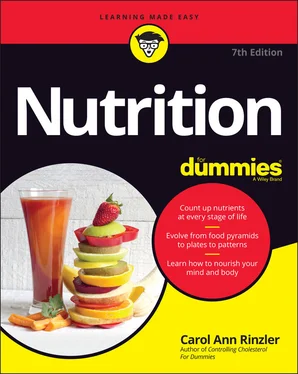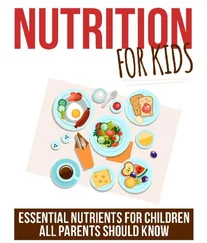A family history of premature heart disease, meaning one or more close relatives who suffered a heart attack before age 50 for a man or age 60 for a woman
Not being physically active or being a smoker
If the profile fits, check with your doctor about a sensible wellness plan.
Facing the Numbers When They Don’t Fit Your Body
Right about here, you probably feel the strong need for a really big chocolate bar — not such a bad idea now that nutritionists have discovered that dark chocolate is rich in disease-fighting antioxidants that benefit your various organs (as long as you stick to a 1-ounce, high cocoa content daily “dose”).
 But it makes sense to consider the alternative — realistic rules that enable you to control your weight safely and effectively.
But it makes sense to consider the alternative — realistic rules that enable you to control your weight safely and effectively.
Not everybody starts out with the same set of genes — or fits into the same pair of jeans. Some people are naturally larger and heavier than others. If that’s you, and all your vital stats satisfy your doctor, don’t waste time trying to fit someone else’s idea of perfection. Relax and enjoy your own body.
If you’re overweight and your doctor agrees with your decision to diet, you don’t have to set world records to improve your health. Even a moderate drop in poundage can be highly beneficial. According to the CDC, losing just 5 to 10 percent of your body weight can lower high blood sugar, high cholesterol, and high blood pressure, reducing your risks of diabetes, heart disease, and stroke.
The number you really need to remember is 3,500, the number of calories it takes to gain or lose one pound of body fat. In other words, 3,500 food calories equal one pound of body weight. So if you simplyCut your calorie consumption from 2,000 calories a day to 1,700 and continue to do the same amount of physical work, you’ll lose one pound of fat in approximately just 12 days ( approximately because different bodies burn calories/energy at different rates).Go the other way and increase calories from 1,700 to 2,000 a day without increasing the amount of work you do, approximately 12 days later, you’ll be one pound heavier.
Moderation is the best path to weight control. Moderate calorie deprivation on a sensible diet produces healthful, moderate weight loss; this diet includes a wide variety of different foods containing sufficient amounts of essential nutrients. Abusing this rule and cutting calories to the bone can turn you literally into skin and bones, depriving you of the nutrients you need to live a normal healthy life. For more on the potentially devastating effects of starvation, voluntary and otherwise, check out Chapter 14.
Be more active. Exercise allows you to take in more calories and still lose weight. In addition, exercise reduces the risk of many health problems, such as heart disease. Sounds like a recipe for success.
Although many Americans should work at losing weight, the fact is that many larger people, even people who are clearly obese, do live long, happy, and healthy lives.
To figure out why some overweight people’s health status doesn’t follow the “rules,” many nutrition scientists now focus on the importance of confounding variables — science speak for “something else is going on here.”
Here are three potential confounding variables in the obesity/health equation:
Maybe people who are overweight are more prone to illness because they exercise less, in which case stepping up the workouts may reduce the perceived risk of being overweight.SNOOZE TO LOSEIn 2010, two separate studies, one at the University of Chicago Medical Center and the other at the Division of Sleep Medicine at Brigham and Women's Hospital and Beth Israel Deaconess Medical Center in Boston, linked lack of several good nights’ sleep to weight gain. Naturally, that called for follow-up studies, and sure enough, in 2012, researchers at Columbia University College of Physicians and Surgeons discovered that sleep deprivation appears to impact the “fullness” hormones ghrelin (which says, “I need food”) and leptin (which says “Enough!”), producing more ghrelin, less leptin, and thus eventually more pounds on your body. In plain speak, a sleepy brain makes bad decisions whether for late-night snacking or reaching for a candy bar rather than an apple the following day.
People who are overweight may be more likely to be sick because they eat lots of foods containing high-calorie ingredients, such as saturated fat, that can trigger adverse health effects; in this case, the remedy may simply be a change in diet and a healthier lifestyle including, yes, exercise.
Chapter 5
Calories: Powering Up the Body
IN THIS CHAPTER
 Counting the calories in different nutrients
Counting the calories in different nutrients
 Explaining why women need fewer calories than men
Explaining why women need fewer calories than men
 Setting realistic calorie requirements for your own body
Setting realistic calorie requirements for your own body
Automobiles burn gasoline to get the energy they need to move. Your body burns (metabolizes) food to produce energy in the form of heat that keeps you warm and (as energy) powers your every move and thought.
The amount of heat produced by metabolizing food is measured in a unit called the kilocalorie — the amount of energy it takes to raise the temperature of 1 kilogram of water 1 degree on a Centigrade (Celsius) thermometer at sea level.
 For the non-chemists in the room, 1 kilogram = 1 liter = 1/4 U.S. gallon. As for temperature, 1 degree on the Celsius thermometer = 33.8 degrees on a Fahrenheit thermometer. To convert any temperature from Celsius to Fahrenheit or vice versa, use the following equations, which illustrate a 0 degree temperature, the simplest example:
For the non-chemists in the room, 1 kilogram = 1 liter = 1/4 U.S. gallon. As for temperature, 1 degree on the Celsius thermometer = 33.8 degrees on a Fahrenheit thermometer. To convert any temperature from Celsius to Fahrenheit or vice versa, use the following equations, which illustrate a 0 degree temperature, the simplest example:
°F = °C × 9/5 + 32
32°F = 0°C × 9/5 = 0 + 32 = 32°F°C = (°F – 32) × 5/9
0°C = (32°F – 32) = 0 × 5/9 = 0°C
Nutritionists commonly substitute the word calorie for kilocalorie. Strictly speaking, a true calorie is just 1/1,000 of a kilocalorie, but the word calorie is easier to say and easier to remember, so that’s what you see when you read about the energy in food.
Counting the Calories in Food
When someone says that a serving of food — say, one banana — has 105 calories, that means your metabolizing the banana produces 105 calories of energy your body can use for work.
Different foods have different amounts of calories depending on their nutritional components. For example, high-fat foods have more calories than low-fat foods because a gram of fat has more calories than a gram of carbs or protein or alcohol:
Protein has 4 calories per gram.
Carbohydrates have 4 calories per gram.
Fat has 9 calories per gram.
Alcohol has 7 calories per gram.
In other words, ounce for ounce, proteins and carbohydrates give you fewer than half as many calories as fat. That’s why — again, ounce for ounce — high-fat foods, such as cream cheese, are calorie-rich, while low-fat foods, such as fruits and vegetables, are not.
MEASURING THE NUMBER OF CALORIES
Читать дальше

 But it makes sense to consider the alternative — realistic rules that enable you to control your weight safely and effectively.
But it makes sense to consider the alternative — realistic rules that enable you to control your weight safely and effectively. Counting the calories in different nutrients
Counting the calories in different nutrients For the non-chemists in the room, 1 kilogram = 1 liter = 1/4 U.S. gallon. As for temperature, 1 degree on the Celsius thermometer = 33.8 degrees on a Fahrenheit thermometer. To convert any temperature from Celsius to Fahrenheit or vice versa, use the following equations, which illustrate a 0 degree temperature, the simplest example:
For the non-chemists in the room, 1 kilogram = 1 liter = 1/4 U.S. gallon. As for temperature, 1 degree on the Celsius thermometer = 33.8 degrees on a Fahrenheit thermometer. To convert any temperature from Celsius to Fahrenheit or vice versa, use the following equations, which illustrate a 0 degree temperature, the simplest example:










